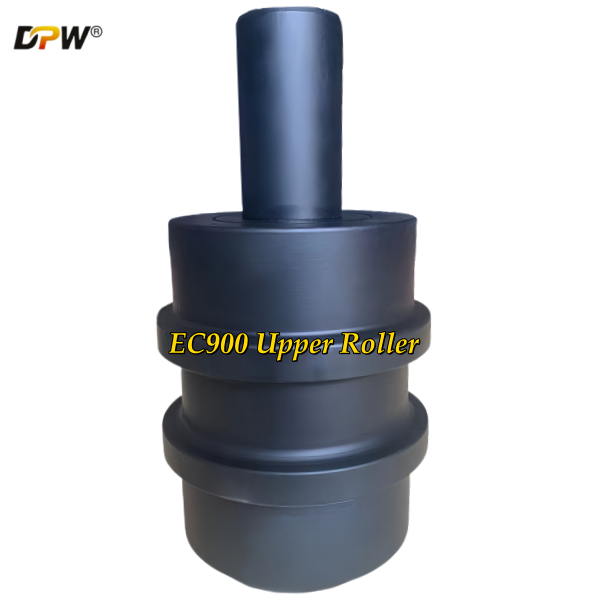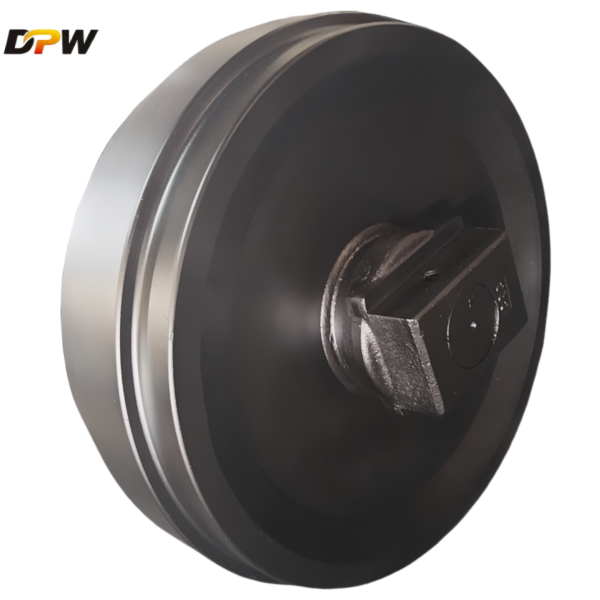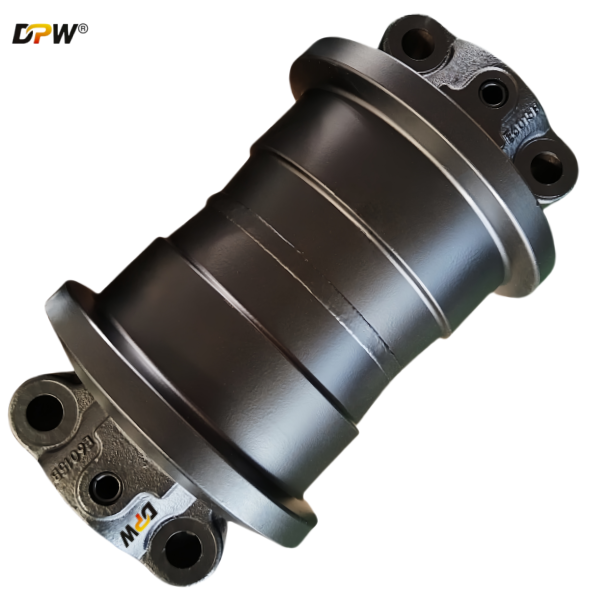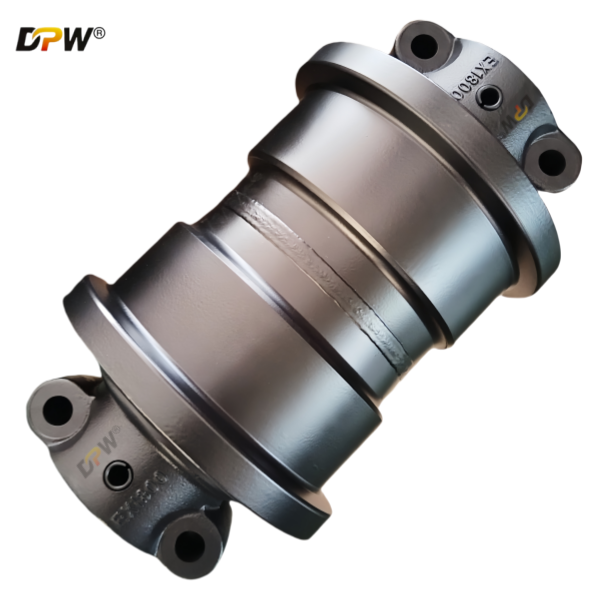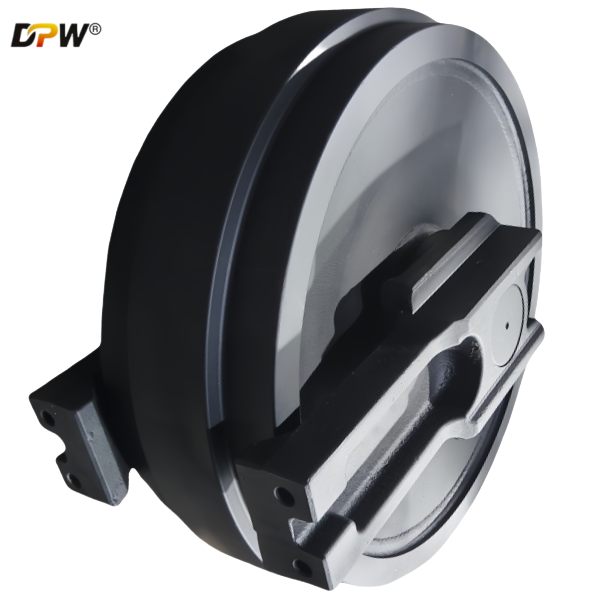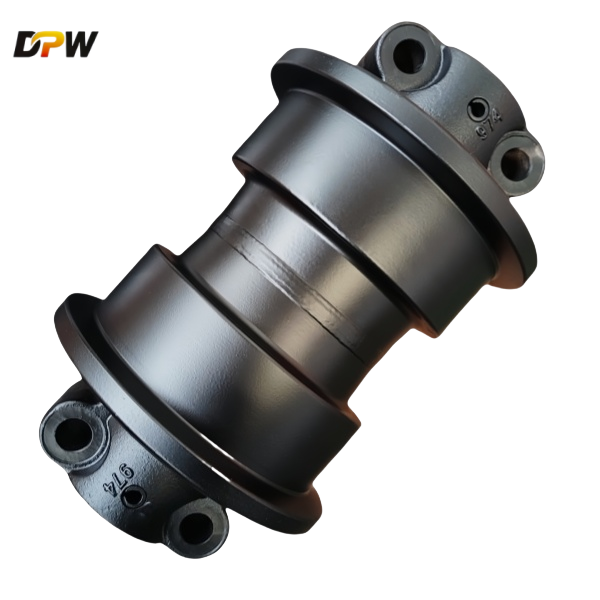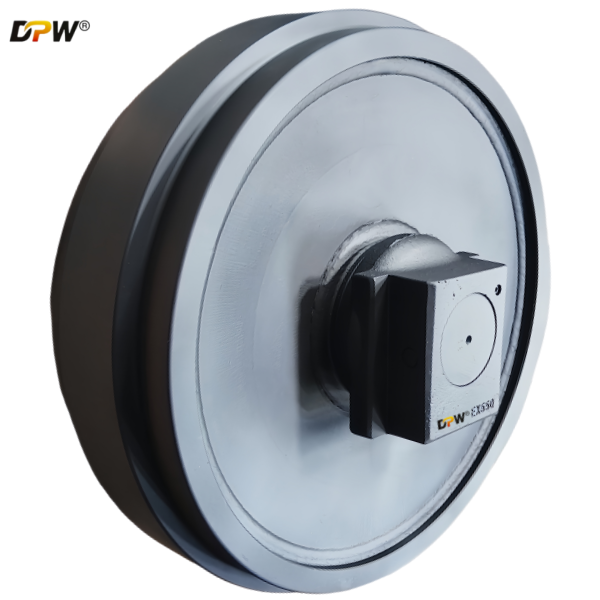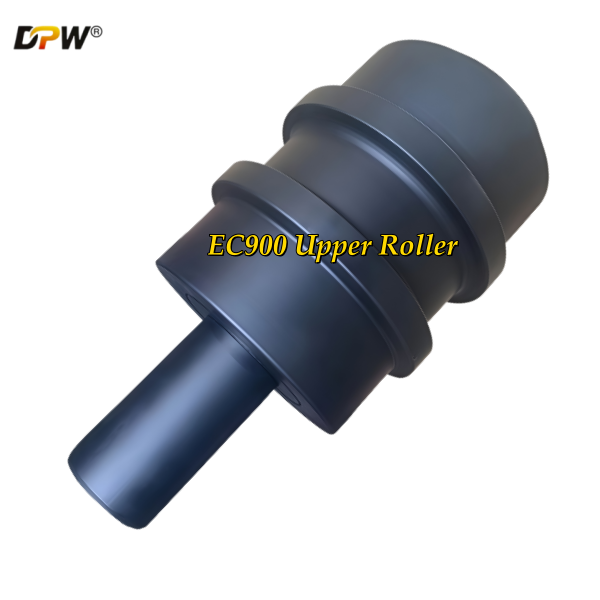
VOLVO EC900/EC950 Carrier Roller/Upper Roller Assembly/Mining Heavy duty chassis components manufacturer and factory-DPW Parts
Product Specifications
Technical Specification: Carrier Roller / Upper Roller Assembly
Part Identification:
Compatible Machine Models: VOLVO EC900, EC950 Crawler Excavators.
Application: Undercarriage System.
Component Aliases: Carrier Roller, Upper Roller, Top Roller.
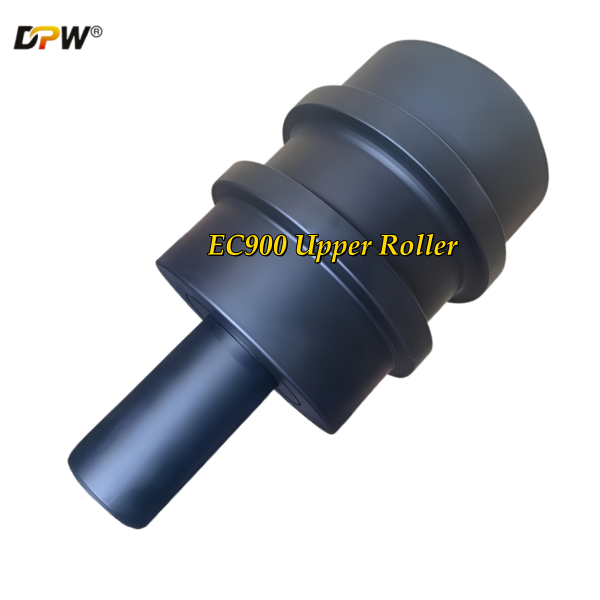
1.0 Component Overview
The Carrier Roller Assembly, also known as the Upper Roller, is a crucial component within the upper structure of the excavator's undercarriage. Positioned on the top of the undercarriage frame, between the front idler and the drive sprocket, its primary role is to support and guide the upper (return) section of the track chain. It does not support the machine's operational weight but is essential for maintaining proper track alignment, tension, and stability.
2.0 Primary Function & Operational Context
The core engineering functions of this assembly are:
Support and Guidance of the Return Track: It carries the weight of the track's upper strand, guiding it in a straight and stable path as it returns from the front idler to the drive sprocket. This prevents excessive lateral movement or whipping of the track.
Track Tension Management: By supporting the track's return side, it helps maintain the correct track sag, which is a direct indicator of proper track tension. Correct tension is vital for minimizing power loss, reducing overall undercarriage wear, and preventing derailment.
Debris Removal (Self-Cleaning Effect): As the track chain passes over the rotating carrier roller, it helps to dislodge and shed mud, clay, and other materials that may be stuck in the track links, contributing to the self-cleaning of the undercarriage system.
3.0 Detailed Construction & Key Sub-Components
A Carrier Roller Assembly is a sealed, rotating mechanism typically consisting of:
3.1 Outer Rim (Tread): The smooth, hardened cylindrical surface that makes direct contact with the track chain links. Its surface is precision-machined to ensure smooth operation and minimize friction.
3.2 Flanges: Integrated lateral guides on one or both sides of the tread. These flanges are critical for containing the track chain, preventing it from sliding off the roller during side-loading events such as turning and operating on slopes.
3.3 Stationary Shaft: A hardened and ground steel shaft that is securely pressed or bolted into the roller's mounting bracket. This shaft remains fixed and does not rotate.
3.4 Bearing System: A set of heavy-duty tapered roller bearings or bushings are fitted between the rotating roller housing and the stationary shaft. These components are designed to handle continuous rotation and moderate radial loads.
3.5 Multi-Stage Sealing System: This is the most critical subsystem for longevity. It typically employs a labyrinth-style design, incorporating a primary radial lip seal, secondary seals, and often a grease-filled chamber. This robust system is designed to effectively exclude highly abrasive contaminants (e.g., dust, slurry) and retain the high-performance grease within the bearing cavity. The integrity of this seal directly dictates the service life of the entire assembly.
3.6 Housing and Mounting Bracket: The main body that encases the internal components and provides the interface (e.g., bolt holes or a specific profile) for attachment to the top of the undercarriage frame.
4.0 Material & Performance Specifications
Material: High-Carbon or Alloy Steel Casting/Forging.
Hardness: The tread and flange contact surfaces are through-hardened or induction-hardened to a typical hardness of 55-60 HRC to provide exceptional resistance to abrasive wear from the track chain.
Lubrication: Pre-filled with a high-temperature, extreme-pressure (EP) lithium-complex grease. Most modern carrier rollers are equipped with a grease fitting (zerk) to allow for periodic re-lubrication during service intervals, which helps to purge ingested contaminants and extend service life.
5.0 Failure Modes & Maintenance Considerations
Wear Limits: Serviceability is determined by measuring the reduction in flange height and tread diameter against VOLVO's specified maximum wear limits. Severely worn flanges dramatically increase the risk of track derailment.
Common Failure Modes:
Flange Wear: The inner sides of the flanges wear down due to constant contact with the track chain's guide guards.
Tread Wear (Grooving): The tread can develop a concave wear pattern or deep grooves from friction with the track links.
Bearing Seizure or Excessive Play: Caused primarily by seal failure, which allows abrasive particles to contaminate the lubricant and destroy the bearing surfaces. This manifests as a roller that does not turn freely (seized) or has noticeable vertical and lateral play.
Seal Failure: The root cause of most premature failures.
Maintenance Practice: Regular inspection is crucial. The roller should spin freely by hand (but not wobble). Any roller that is seized, has excessive play, or shows significant flange wear should be replaced immediately. Carrier rollers should ideally be replaced in pairs on the same side of the machine. Their condition must be evaluated as part of the entire undercarriage system (track chain, sprocket, idler, bottom rollers) for a coherent and cost-effective maintenance strategy.

